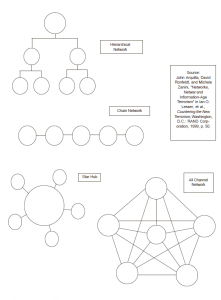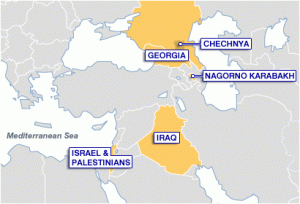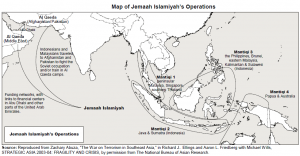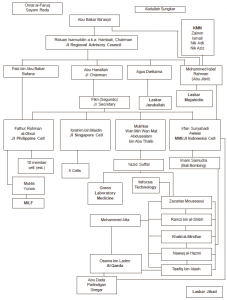Research Paper on Terrorism in Southeast Asia and its Roots from the Middle East
The world history after September 11, 2001 had come to the new phase, where the main hazard to the humanity had become less clear and more abstract: international terrorism. International terrorism is considered to be a result of anti-globalization movement in predominantly Muslim world, where traditional universal values based on the principles of democracy and humanism are tried to be substituted by fundamentalist ideas of Islam which were used only in the Middle age epoch. Radical Muslims consider globalization to carry danger to their religious and cultural self-identity and consider globalization effects to cause the decline of morals and decline of religion of Islam. The talk about the origins of international terrorism can be very continuous as the topic of Muslim terrorist movement had a number of premises and different background (not only caused by globalization processes, but also but particularities of foreign policy of super powers on Middle East: The USA, NATO and the USSR) The failure of the superpowers during the years of the Cold war to establish balance of powers on the Middle east, manipulation by complexity of relations of different political and religious clans in this region caused prolonged instability and had created the most favorable conditions for the development of alternative military forces, armed religious and political groups which were out of government control. The growth of Muslim terrorism in Southeast Asia, region with the most considerable Muslim population started right after the September 11. Terrorist acts in Bali, Malaysia, Philippines were made in response of American presence on the territory of these countries and against idle government which takes favorable position to the presence of American military forces. Strong religious roots of the population f the Southeast Asia created favorable conditions for the growth of radical Muslim theories starting from 1970’s, time when the first and the most prolonged conflict against Muslim countries started Arab-Israeli wars. The USA which aided Israel was considered to be an aggressor, and then evidence was presented by the Soviet occupation of Afghanistan. So radical religious leaders had a lot of facts and events to be interpreted in their favor:
“The emergence of radical Islamic movements in Southeast Asia in the 1990s can be traced to the conjunction of several phenomena. Among these were reaction to globalization — which has been particularly associated with the United States in the minds of regional elites — frustration with repression by secularist governments, the desire to create a pan-Islamic Southeast Asia, reaction to the Israeli occupation in the West Bank and Gaza Strip, and the arrival of terrorist veterans of years of fighting in Afghanistan. The forging of connections between Al Qaeda and domestic radical Islamic groups in Southeast Asia is part of this trend.” (from Manyin, Mark Terrorism in Southeast Asia)
Historical conditions forth growth of terrorism in Southeast Asia were more than favorable. Colonization of Indochina, Indonesia and South pacific in general in the 18-19th century by Europeans and prolonged exploitation of local population created favorable conditions for the growth of hatred toward Europeans and towards western culture in general. Riots were integral part in the history of these countries up until they got independence. Terrorist practices were used by guerilla fighters in Philippines, Indonesia, and Malaysia. The most prolonged confrontation of opposition and official powers in Malaysia lasted nearly ten years. Insurgency in Malaysia initiated by communist guerillas of predominantly Chinese origin, even though had no support among Muslim majority but still showed how small terrorist groups and guerillas can resist official government and colonial British administration. Today the tactics and strategy used by guerillas in Malaysia, China, Cuba and other countries are effectively used by Muslim terrorist and combat groups in street fights, planning of terrorist acts and development of secret networks of terrorists worldwide. Of course ideologies of western radical thought such as Marxism and its Asian analogue Maoism, which is based more on rural and nationalist mentality, had nothing common with the ideas of Muslim fundamentalists, but their tactics appeared to be very effective. But the strategy of Malaysian Communists was not really effective. The war started with the murder of a European planter by two communist terrorists and the attacks on British patrols and European planters started all over the country. Guerillas forced peasants and workers to stop working on plantations; they burned a number of rubber plantations and robbed peasants. Due to a developed network with urban ethnic Chinese terrorists could regulate their actions in cities and small towns secretly, so that police had no control over their activity. Such practices failed to paralyze British administration, but instead they only forced British to react adequately. If it’s stated that Communist movement was the only political movement to resist colonialism in Malaysia in 1950’s:
“… Chin Peng’s claims that the CPM was “the only indigenous political movement capable of offering a challenge to the imperialists” (Bowring, P. Parallels in History)
Then nowadays we can say that religion became that alternative, after peoples in southeast region got sure that none of western economical and political models fully satisfies their cultural and religious particularities. Communist insurgence in Malaya also had other impacts: Muslim population realized that their can be a danger to their way of life and their dominative role. It resulted in the terror from the side of Muslim Malayans to Chinese, and only proved that Muslim majority of the country can show a strong opposition towards anyway who would try to violate their way of life. For example Ong in her study describe the roots of muslim fundamentalism in SEA as follows:
“The waves of Malay, Indian, Chinese, and more recently European immigration into SEA throughout hundreds of years had resulted in a patchwork of racial, religious, and ethnic diversities that were deeply ingrained in the social and cultural fabric of SEA. These diversities were accentuated by European colonization, which introduced artificial boundaries and external models of state organizations into SEA, rather than allowing them to develop indigenously. While the newly independent countries in SEA struggled with their new identities and roles with the end of the colonial era after World War II, new pressures and influences arose. SEA had barely begun to assimilate the impact of European colonialism when it was faced with accelerating change after World War II and entered into the Cold War between two superpowers.” (from Ong, Ann Kiat An analysis of the emerge of transnational terrorism in Southeast Asia http://cgsc.cdmhost.com/cgi-bin/showfile.exe?CISOROOT=/p4013coll2&CISOPTR=98)
Another very important in spread of radical ideas of Islam was internationalism of its ideology and Muslim philosophy. In many respects this internationalism has nothing similar to the European concept of nationalism and internationalism. It is clearly stated that nationalism can appear only in bourgeois society at the certain stage of development when its members realize national identity and nation unity on the base of political, social and cultural values. It took several hundred years for Europeans to realize that they are nations in order to develop national institutions of government, etc. The feeling of nationalism can appear only on the base of common civil rights, freedoms and liberties in civil society. Of course Southeast Asia didn’t have such practice and didn’t have anything similar to such experience. Western model of government and political regime was introduced by Europeans and in many respects became ineffective. None of today’s Muslim countries (with a partial exception of some middle east countries) had experienced anything similar to gradual development of capitalist relations and forming of national elites on the base of material wealth. Most of Muslim Asian countries made a step towards their today’s economical and political regimes from feudalism, skipping development of capitalist relations. That’s why in some 50 years not considerable changes occurred in the mentality of these peoples. The respect to the national elites (new businessmen which made fortunes in the new era of these countries) can not be compared to the respect given to traditional religious leaders. These practices can be classified as feudal survivals but today they contribute to the development of alternative mentality in Southeast Asia and in a number of Arab world countries. The ideology of Muslim religion for centuries was the main mean of stability and ethnic tolerance in this region. The doctrine that “all Muslims are brothers” especially in socially ordinary societies became the most appropriate. That’s why in a number of Muslim states there existed no national question or ethnic issues. For example in Ottoman Empire there was no official division of society on Turks, Arabs, Serbs, Greeks or Armenians; but there existed division on Muslims and non-Muslims. The same was common for all predominantly Muslim societies of Southeast Asia:
“In the East the traditional dividing lines were religious, not national” (Davison, R. The dissolution of Ottoman Empire Ohio state University Press 1977 p.33)
It’s also important to note that SEA Muslims although belong to different ethnic group, but in their majority they speak dialects on nearly the same Indo-Malayan languages, which is a very important factor for possible unity. From the other side internationalism of Islam ideology created favorable conditions for the further establishment of links with Middle East Muslim radicals and then with Al Qaeda. Otherwise, it would be impossible for Arab agents in SEA to recruit volunteers to fight in the Middle East for the ideas of Islam.
Bone, for example described contemporary SEA as “an exciting cultural complexity, a political fiction, and an international problem of uncertain but disturbing proportions.” (from Robert C. Bone, Contemporary Southeast Asia New York: Random House, 1962, 3.)
A number of scientists agree that the key role in development of Muslim fundamentalism is played by local religious elites. The key role of elites in civil wars is pretty clear and correct in many respects. Today in the globalized community even the distinguished differences of different ethnic groups stop to play a main role in social relations as a majority has universal cultural values, which are common for different nations. Prolonged coexistence and mutual economic relations contribute to the stability and tolerance growth even in the most instable regions where ethnic hatred existed for years. Today ethnic conflicts have deeper interests for certain corporative interests who have nothing similar to struggle for political rights or religious freedoms. All civil conflicts are well planned and managed sometimes even from the behalf of governments which gain popularity and political dividends. An example can be a Israeli-Arabian conflict in Palestine, where Jews and Arabs coexisted together for centuries and which started after illogical partition plan of Palestine in late 1940’s when Arabs lost autonomy and majority of their lands, the same nature had civil war in Chechnya (Russian Federation) and growth terrorism in SEA has similar roots. Arabian world is against globalization and westernization which is regarded to be the most important thread to cannons of Islam. They see their power not only in controlling oil prices but also in getting rid of western world dependence. The main purpose of preparing terrorist combat groups in SEA is to get control over the whole country and get rid of foreign penetration into national economies. The growth rates of SEA economies are the highest in the world and even though the economy of Malaysia, Indonesia, Philippines depends much upon the investments of foreign companies; the growth rates which they demonstrate allow themselves to refuse from foreign penetration into their economies. It’s clearly understood by fundamentalist leaders as they see their interests only financial potential of SEA region. In many cases the issue of corporative interests is the main in struggle for power and religious and political principles play only secondary role:
“Although insurgent groups in Southeast Asia’s terrorist brotherhood do not share the same goals, their cooperation across national boundaries creates an economy of scale for logistics, training, and safe havens. For example, Jemaah Islamiyah (JI) and the Free Aceh Movement (GAM) have trained with the Moro Islamic Liberation Front (MILF) in camps in the southern Philippines; GAM smuggles weapons with the Thai terrorist group Pattani United Liberation Organization (PULO), and many terrorists use regional connections to move from country to country.” (from Southeast Asia and the Brotherhood of Terrorism by Dana R. Dillon http://www.heritage.org/Research/AsiaandthePacific/hl860.cfm)
Historically the ties between different SEA terrorist organizations didn’t exist before 1980’s. There are a number of reasons for such situation: Southeast Asia was divided between different colonial powers: Spain, Holland, England, etc. So the peoples which populated these territories had small mutual interaction and had more differences than common points in their political and national agenda. That’s why different political movements, and of course radical groups which chose terror as the main instrument of achieving political influence very alienated. Jamaal Islamiyah was foundered by Indonesian radical clerics at the end of the 1940’s and began to spread its ideas starting from 1950’s. Another terrorist group GAM started its activity only in 1976 against official Jakarta. Some of the early terrorist groups in Southeast Asia originated from Moro terrorist groups which were organized in Philippines during Spanish colonial era as an opposition to colonial regime.
From the other side today’s Southeast Asia terrorist groups are much supplemented by former combat guerillas who fought against Soviets in Afghanistan and who were trained in military camps of Middle East. A special role in the training and further ideology of Islamist terrorist groups in SEA was played predominantly by Al Quaida. Starting from 1970’s thousands of young Indonesians and Malaysians were sent to study in Middle East universities, but a small percentage of them returned back with diplomas. A number of these “students” volunteered to training military camps in Palestine, Libya, Lebanon were they studied tactics of street fights and tactics of terror. Later a number of volunteers from SEA were trained in camps Peshawar in Pakistan and fought as mojaheed in Afghanistan against Soviet Army. The military experience which was gotten in Afghanistan military campaign and later in Taliban civil war inspired them to promote ideas of Muslim fundamentalism back home in countries of South East Asia. Experience got in Middle East also influenced organizational strategies of future SEA terrorists, as they learnt to organize independently acting terrorist groups which could follow the official doctrine and which could be organized without any orders coming from the upper circles of terrorist hierarchy.
Terrorist organization structures (from Funding Terrorists in Southeast Asia, National Bureau of Asia Research Dec. 2003)
Besides, it’s important to note that such radical ideas are mostly common for undeveloped regions of SEA countries, as a number of people who are employed in profitable high tech industries in the capital and industrial centers don’t feel sympathy to ideas of fundamental Islam, because of instability it will promote in future.
Nevertheless some analysts do not hurry to day that SEA terrorist groups have a hazard for western civilization: “There has been considerable debate over the relationship between Jemaah Islamiyah and Al Qaeda. Although many analysts at first assumed that JI is Al Qaeda’s Southeast Asian affiliate, recent reporting — including leaks from interrogations of captured JI and Al Qaeda operatives — have shown that the two groups are discrete organizations with differing, though often overlapping,agendas.13 Whereas Al Qaeda’s focus is global and definitively targets Westerners and Western institutions, Jemaah Islamiyah is focused on radicalizing Muslim Southeast Asia (starting with Indonesia) and some JI leaders are said to feel that attacking Western targets — as Osama bin Laden has urged — will undermine this goal. (from Jose Katigbak US: Evidence of MILF-JI ties strong The Philippine Star March 10, 2005)
A number of young volunteers were recruited to Al-Qaeda camps all over Middle East where they were trained up until American occupation which started in September, 2001. From Afghanistan they were sent to different “hot spots” all over the world, but mainly to conflicts in Caucasus (Chechnya, Azerbaijan) and former Yugoslavia, where they aided Muslim fighting sides.
Participation of SEA terrorists in civil conflicts of former USSR republics (map is provided by This world, BBC news htp://news.bbc.co.uk/1/shared/spl/hi/programmes/this_world/one_day_of_war/clickable_map/html/chechnya.stm)
Besides Afghanistan and participation in local conflicts in South Europe, the most important jihad experience fro South Eastern terrorists was battle against Christian population of Moluccas. Although there existed division on Muslim and Christian part of the island, in 1999 shaky peace was destroyed pouring into 3 years of bloody conflicts. The number of victims in this civil conflict reached the number of 5000 dead and 350000 had to escape.
The result of this conflict became military cooperation of different alienated terrorist military groups from all Southeast Asia: Kumpulan Militan Malaysia, Laskar Jihad, and Jemaah Islamiyah.
(from Terrorism in Southeast Asia Congressional Research Service Report for Congress)
Besides, Southeast Asian terrorists got official support from the head of the state of Libya, Colonel M. Kadafi:
“For example, between 1986 and 1989, GAM sent an estimated 5,000 military cadres to train in terrorist camps in Libya. There they associated with a wide cross-section of international terrorist groups. Libya also acted as a conduit for ransom payments and “aid” money (sometimes called “livelihood projects”) for Abu Sayyaf and other Filipino Muslim groups.” (from Southeast Asia and the Brotherhood of Terrorism by Dana R. Dillon http://www.heritage.org/Research/AsiaandthePacific/hl860.cfm)
Abu Bakar Bashir organized a meeting of the representatives of the major fundamentalist Islamic movements in SEA in International Islamic University of Malaysia in 1999. The result of this meeting was establishment of coalition of Mujaheed (united MILF and JI):
Terrorist Network in Southeast Asia (from Funding Terrorists in Southeast Asia, National Bureau of Asia Research Dec. 2003)
Condoleezza Rice described Southeast Asia as “a very important front” in the war on terrorism, because it poses a serious threat to economic prosperity, and stability as well.
Making a conclusion it’s important to say that preventive measures against the spread of Muslim fundamentalism should be as strict as measures taken to combat terrorists all over the world. First of all these measures require careful and logical politics towards countries with big Muslim population. It’s also a very serious fact that SEA stands for the most Muslim populated region of the world. It’s also a very important aspect in terms of growing danger of fundamentalist ideas spread mainly because Al Qaeda makes the strongest emphasis on spread of its ideas in this region as the mostly uncontrolled from the side of the USA and NATO and the region with the highest penitential. This aspect is more that important in developing consolidated and balanced foreign policy towards this region. Another aspect is the gradual spread of western ideas which should be based not on the spread of western Christian model of democracy but on the spread of universal values, as there most typical democratic revolution which can take place in Muslim society is best describe on the example of Iran and Libya. It’s a representative democracy, but the role of constitution is substituted by shiriat laws and Koran. A special role in ideological fight against fundamentalists is also played by anti-terrorist propaganda, pacifism and war against the spread of marine piracy as SEA stands for the world’ highest yardsticks of marine piracy. Pirates also support terrorist as they rely on spreading their influence in case fundamentalists will take power. But the realities of nowadays show that radical Muslim parties all over SEA do not win parliament elections and always in minority in parliament, which means they do not have wide support over the population of SEA countries. For example the president of Indonesia Abdurrahman Wahid (Gus Dur), and the speaker of the parliament represent Muslim parties which have wide secular programs. In Malaysia Islamists lost elections in 2004, even though they were in majority in the parliament since 1990’s. Such tendencies witness about decline of fundamentalist ideologies. On of the important contributing factors is economical growth and recovery from economical crisis of late 1990’s.
References:
1. Manyin, Mark Terrorism in Southeast Asia Congressional research service, Library of Congress 2004
2. Bowring, P. Parallels in History Penguin, 1998
3. Jose Katigbak US: Evidence of MILF-JI ties strong The Philippine Star March 10, 2005
4. Southeast Asia and the Brotherhood of Terrorism by Dana R. Dillon http://www.heritage.org/Research/AsiaandthePacific/hl860.cfm
5. Southeast Asia and the Brotherhood of Terrorism by Dana R. Dillon http://www.heritage.org/Research/AsiaandthePacific/hl860.cfm
6. Robert C. Bone, Contemporary Southeast Asia New York: Random House, 1962, 3.
7. Davison, R. The dissolution of Ottoman Empire Ohio state University Press 1977 p.33
8. Bone, Robert C. Contemporary Southeast Asia. New York: Random House, 1962.
9. Campbell, Kurt M., and Michele A. Fluornoy. To Prevail: An American Strategy for the
10. Campaign Against Terrorism. Washington, DC: Center for Strategic and International Studies, 2001.
11. Grinter, Lawrence E. Realities of Revolutionary Violence in Southeast Asia. Alabama, Maxwell Air Force Base: Air University Press, March 1990.
12. Guelke, Adrian. The Age of Terrorism and the International Political System. London and New York: I. B. Tauris Publishers, 1995.
13. Hoffman, Bruce. Countering the New Terrorism. Washington, DC: RAND Corporation, 1999. Inside Terrorism. New York: Columbia University Press, 1998.
14. Leifer, Michael. Singapore’s Foreign Policy: Coping with Vulnerability. London: Taylorand Francis Books Ltd., 2000.
15. McDonald, George R. Political Terrorism in Southeast Asia and US Policy Issues: Case Studies of Thailand and Indonesia. Monterey, CA: Naval Postgraduate School, December 1998.
Feel free to get professional term paper writing help online from academic writers at Professay.com. Our experienced writers will provide you with a high-quality non-plagiarized custom term paper for affordable price.











